This season: 81 games, 16 goals, 21 assists, 37 points, 49 penalty minutes, +11 rating, -2.7% CF%Rel, 1.043 PDO, 13:20 time on ice
The good: Cataloguing an Adrian Kempe season means sifting through a number of photographs in which Kempe – just among the first handful of Getty Images available – is: engaging in post-whistle activity with Erik Haula; catching Colin Miller in between the hands with a slash; tangling up with Dillon Heatherington; locking down on Tyler Seguin’s stick; dragging two defenders while buzzing Kari Lehtonen. As a player who turned 21 the day training camp opened and went on to score 16 goals and log 37 points, the explosively fast Kempe draws on a diverse set of assets for which every quark of skill is matched by a quark and a half of battling, grinding and responsibility. There were many more questions than expectations with Kempe entering 2017-18, and though several still exist, by and large Kempe confidently answered what was asked of him. He played his best hockey when he was in an elevated role, skating with (and against) more highly skilled players in Jeff Carter’s absence, and it’s pretty remarkable that the Kings did what they did when their leading scorer from the year prior was swapped out for a 21-year-old rookie. The season could have very easily derailed in mid-October, but Kempe’s performance through the first half of the season – especially during an early-season road trip through a number of difficult buildings – was among the prime reasons for the team not only gutting out a challenging set of variables, but thriving amidst them. “After the first couple of games when I started playing better, I felt like I got more confidence, started scoring, and … that builds confidence for the entire team,” he said on December 28. “You get more confidence and you get to know the game and the guys a lot more. There’s not probably a special moment that it happened, but I think it comes along over the entire season, and it’s probably going to keep building on.”
Kempe impressively made it through February 7 with a 21.0% shooting percentage that ranked fifth in the league at the time. But even as the market corrected and he failed to score a goal over his final 29 games, he still found success on the other side of the puck and was offering a sound combination of checking and hardened responsible play. Like Anze Kopitar, who, similar to Kempe is another coach’s son, he can still help the team even when he’s not scoring, and though his production would have greatly benefited the team down the stretch, Kempe still continued to develop his identity as a competitive center who plays with ample heart and toughness. He was one of the few Kings whose efforts and identities rubbed off on the playoff series against the Golden Knights, and though the series lasted only four games, Kempe forechecked well, showed an elevated battle component in his first postseason go-around and elicited superior possession, scoring chance and high-degree scoring chance rates, per Natural Stat Trick.
Also: he’s fast. Very fast! “He’s up with Jeff Carter,” John Stevens said during training camp. It allows him to attack open ice with speed and back defenses off, a means of recording several assists while narrowly missing out on several others. He’s not afraid to dart into the narrow passageways, either. More than individual, unadulterated speed, he’s also able to generate collective speed as a line and off the rush, and it’s an understatement to say that’s an important asset for the LA Kings. “He doesn’t just make your team faster, he makes the people he’s playing with faster,” Stevens said after the season. It’s why he found his greatest success with Tanner Pearson and Tyler Toffoli, two players who are capable of playing fast, and perhaps why he wasn’t as productive when he descended a step in the center chain upon Carter’s return.
Even though there was the drastic drop-off in production late in the season, Kempe still ranked second on the team with 1.91 points per 60 minutes and .89 G/60 in five-on-five play, trailing only Kopitar. Pretty remarkably, he registered no goals and six assists over his final 20 games and still tied Brayden Schenn for 84th in the league with those 1.91 points per 60. Only four of the league’s 100 most productive players per 60 minutes of five-on-five play averaged less than Kempe’s 11:38 5×5 TOI average, so there’s reason for optimism when a 21-year-old cracks such a scoring list while displaying an elevated shooting percentage to start his career. He appears to be a high-grade shootout option, showing slick hands in scoring on both of his attempts.
The bad: Raw faceoff percentages aren’t as useful as faceoffs per zone, side of the ice and game situation, but Kempe struggled tremendously at the faceoff dot in his first full professional season at center. His 38.5% rate on 683 draws tied him with Jared McCann for the lowest rate of any player with at least 500 draws on the season. He didn’t trend well as the season progressed and won only 39 of 113 draws from March 1 onward. As long as Kempe remains a center – and that should be the foreseeable future – there will be limitations at the faceoff dot, even if he experiences a bell curve towards proficiency as he gains repetition and familiarity with his opponents. Starting in the preseason, he also showed a tendency to take minor penalties, a trend that continued into a season in which his 1.21 penalties/60 was the third worst rate on the team. Kempe’s -16 penalty plus-minus in all situations was the worst among club forwards and the fourth-worst among all NHL forwards.
Though Kempe did see time against the Ryan Getzlafs, Connor McDavids and Sean Monahans of the hockey world while playing on the road during Carter’s injury, the spreadsheets spit out the profile of a player who faced a below average level of competition, comparable to his teammates. Somewhat worryingly, Kempe started in the offensive zone and avoided defensive zone starts to a greater degree than any of his teammates – a byproduct of his faceoff challenges – but he still finished with a team-worst SA/60, a team-worst SF%, the second-worst raw Corsi and the second-lowest percentage of chances for, per Natural Stat Trick. Instead, he relied on his goaltenders to save 95.1% of all shots they faced in five-on-five play, the highest rate on Los Angeles and the fifth highest in the league. There’s a good chance his quality 1.59 GA/60 gravitates towards 2.0 in 2018-19. Though Kempe is a terrific skater, there have been calls in the past for him to be less loopy in his turns – though he certainly made strides in his improved point-to-point skating in 2017-18. “We want a guy that doesn’t go through the long stretches without scoring because he’s a good enough player to create those opportunities, but offensively we would like to see him get inside the dots, get in the blue paint a little more, use his ability to get some separation in the offensive zone and ultimately put himself in more shooting situations where he’s putting more pucks on the net,” Stevens said after the season. Kempe finished with 119 shots in all situations.
Going forward: Kempe entered 2017-18 as an intriguing player but one attached to a number of question marks. Just one year later, he’ll figure to be an important piece of a team whose measure of success will be based out of squeezing additional offense out of players already on the roster. Ilya Kovalchuk should add some extra potency, especially on the power play, but the Kings’ direction will be charted in large part by the outputs of players like Kempe, Pearson, Toffoli and Carter, a collection of players, apart from the injured Carter, who dealt with bouts of inconsistency but retain additional capacities for production. Is there strong reason to believe Kempe is capable of reaching a higher barrier after accounting for 37 points as a rookie? Well, apparently some questions do follow him into his sophomore season. On one hand, he’s figured to be an effective five-on-five scorer and offers both speed and a willingness to get his nose dirty to help his team. On the other hand, he received friendly starts and competition, relied on an elevated shooting percentage, faces additional competition for power play minutes with Kovalchuk’s arrival and did not connect offensively with a less-skilled assortment of players than those with whom he found success early in the year. (This could be an issue, because barring another injury to a center, Kempe is likely to spend much of his time as a third line center alongside players who do not have the same history of actual production as Pearson or Toffoli.) “I thought he played with good energy and really carried the speed that we expected from him in our lineup and played in a lot of situations that we expect from him in our lineup, and I think if he gets a little more consistency with the people he’s playing with, I think he’ll get a better result in the end,” said Stevens, who has worked well with Kempe in their time together and, like management, is highly intrigued by what can open up with that available speed down the center of the ice.
The Kings would greatly benefit from a spike in production, but even if one does not materialize or is blunted, there is still enough responsible play without the puck and sandpaper quality to make him effective at a slot in the lineup where teams are becoming increasingly reliant on speed. (A third line in which Alex Iafallo and Trevor Lewis flank Kempe does sound interesting.) Los Angeles spends to the salary cap and will benefit greatly from its low-cost players providing dividends, and Kempe, who will play off the final season of his entry-level contract before he’s eligible for restricted free agency next summer, represents some of the best value on the roster. It may not always be reflected in his numbers next season, but Kempe will continue to grow and develop and take on a wider array of roles as he continues to lay the base for what should be a lengthy NHL career. “That’s his first full year in the league and again, speaking from experience, it takes a little bit of time to figure out your routines and what’s working for you and what’s not,” Kopitar said. “It too me a little bit too, so I’m sure he’s going to make some adjustments over the course of the summer and even coming here next year, he’ll be a really good player for us.”
Previous Kempe evaluation: 2017
Player evaluations: #3 DION PHANEUF | #6 JAKE MUZZIN | #7 OSCAR FANTENBERG | #8 DREW DOUGHTY | #9 ADRIAN KEMPE | #11 ANZE KOPITAR | #13 KYLE CLIFFORD | #19 ALEX IAFALLO | #22 TREVOR LEWIS | #23 DUSTIN BROWN | #24 DEREK FORBORT | #27 ALEC MARTINEZ | #32 JONATHAN QUICK | #44 NATE THOMPSON | #52 MICHAEL AMADIO | #70 TANNER PEARSON | #73 TYLER TOFFOLI | #77 JEFF CARTER | KUEMPER / CAMPBELL | THE OTHERS

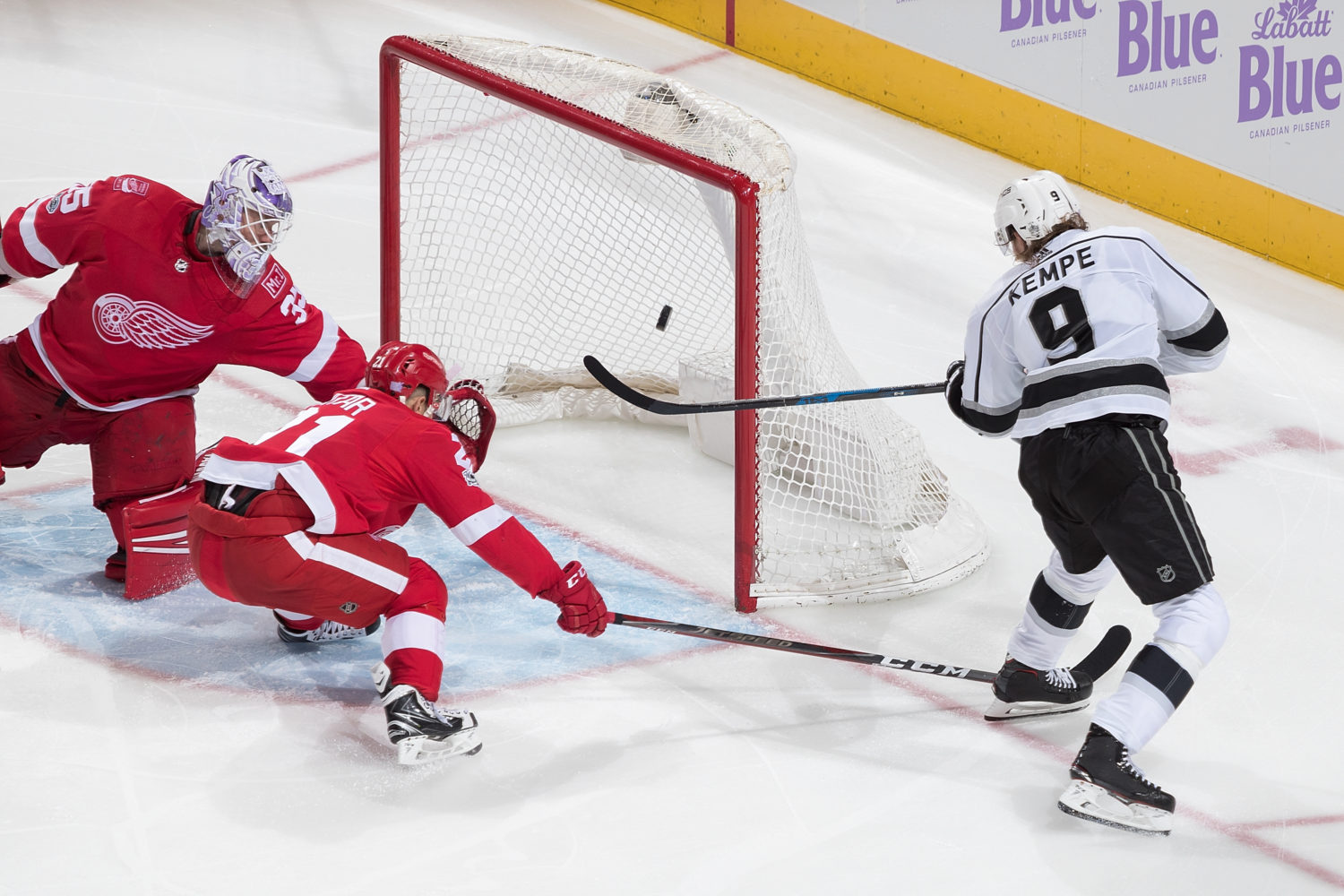
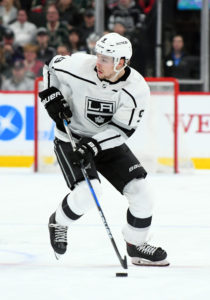
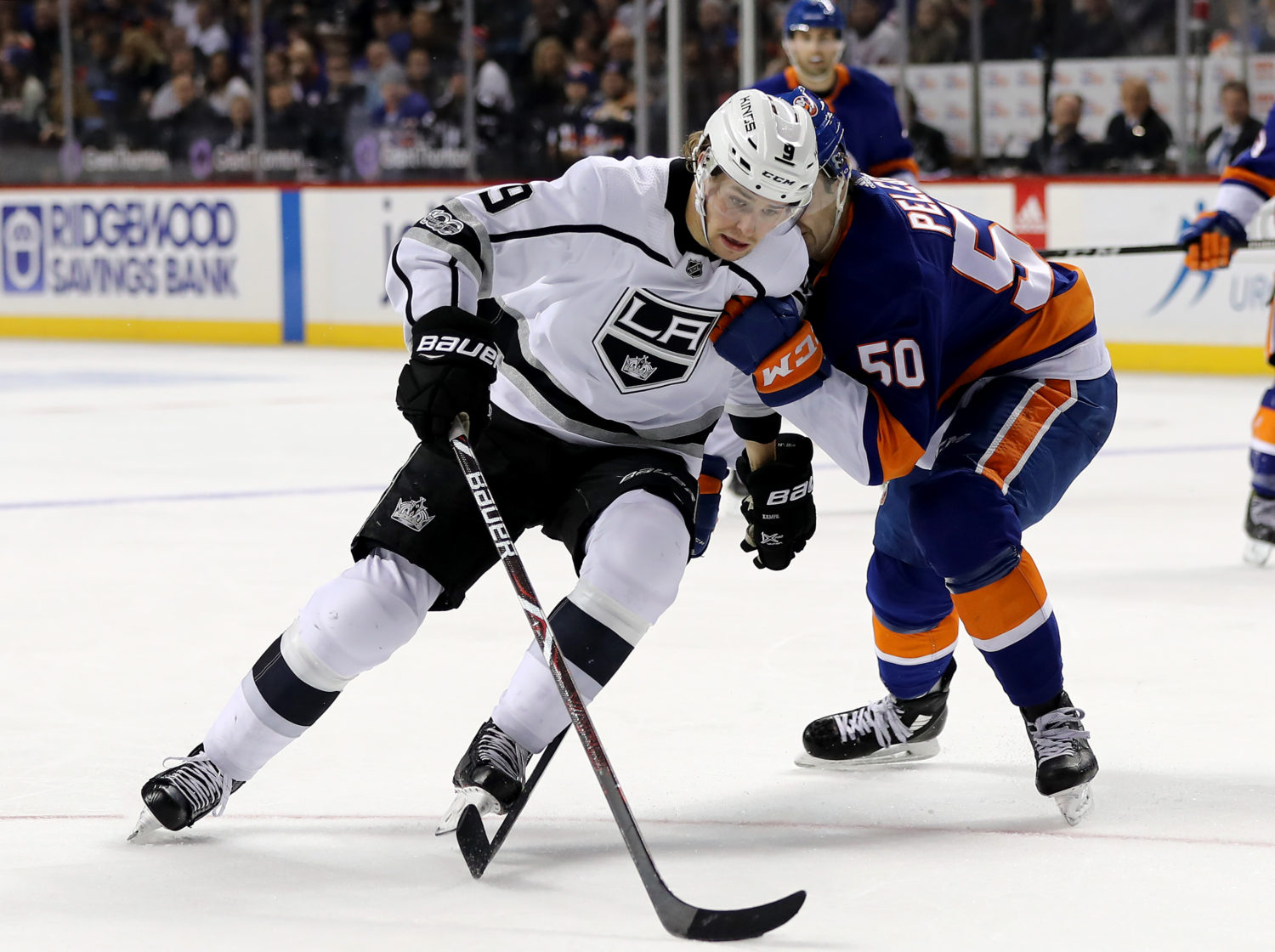
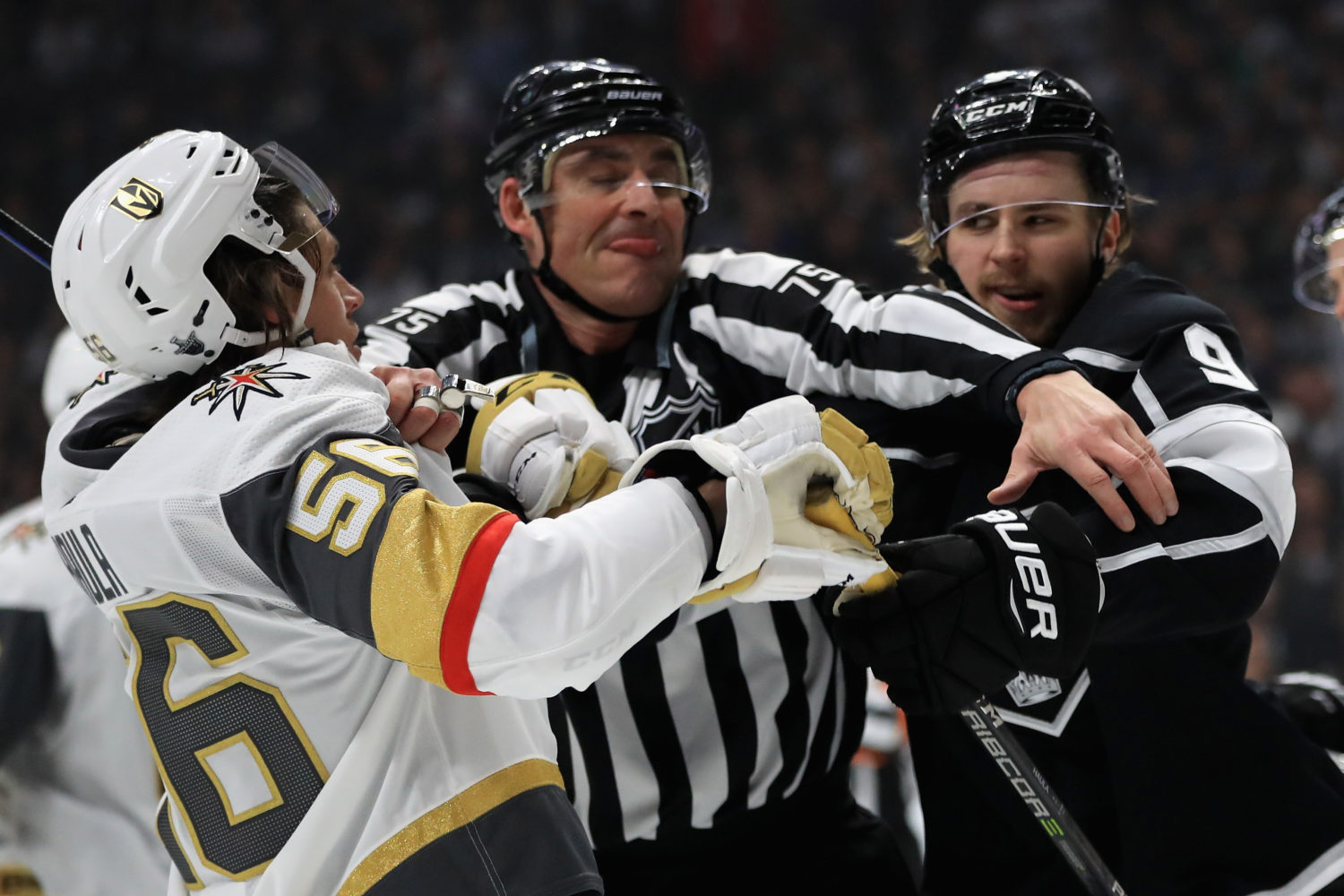
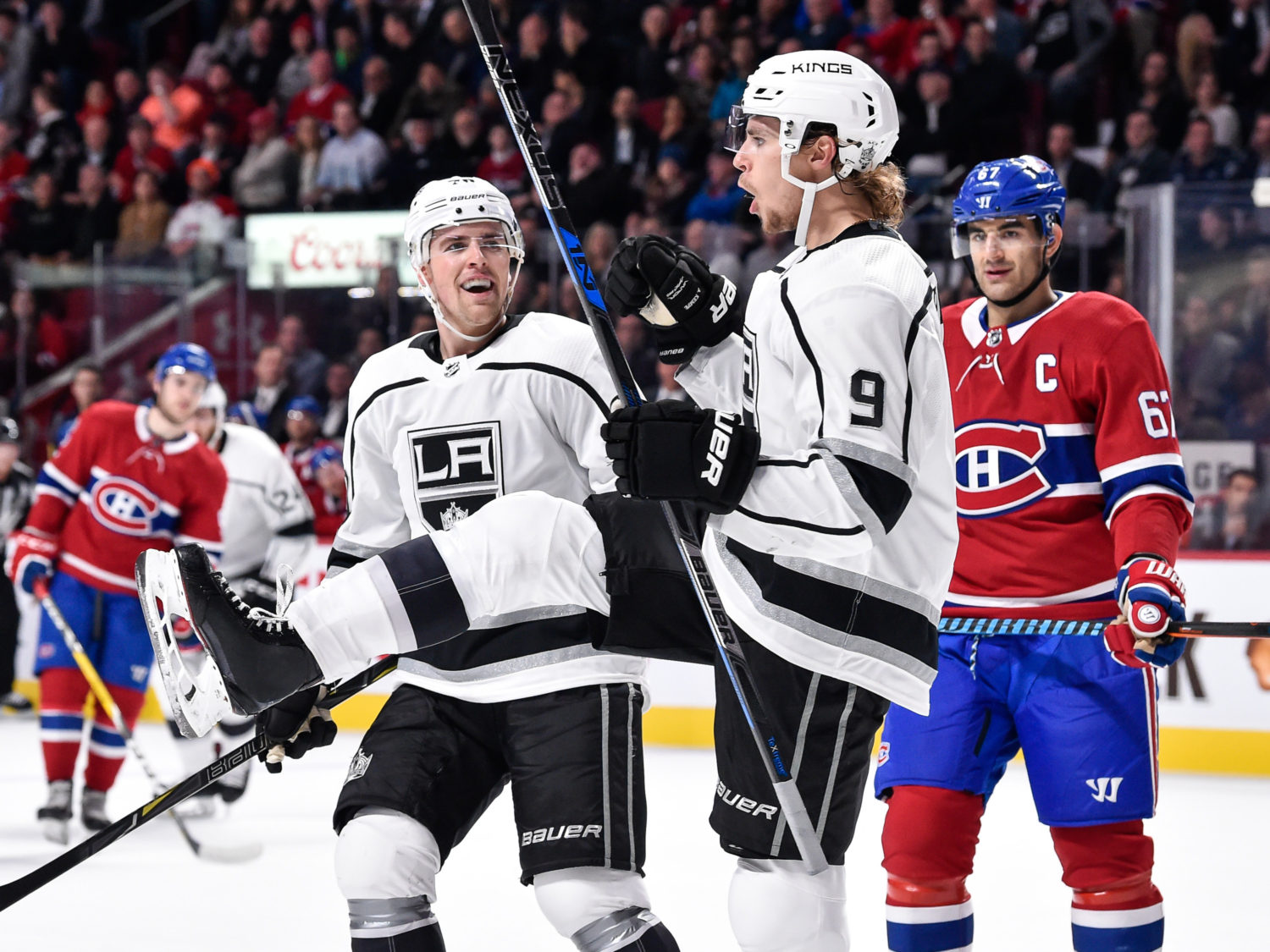
Rules for Blog Commenting
Repeated violations of the blog rules will result in site bans, commensurate with the nature and number of offenses.
Please flag any comments that violate the site rules for moderation. For immediate problems regarding problematic posts, please email zdooley@lakings.com.